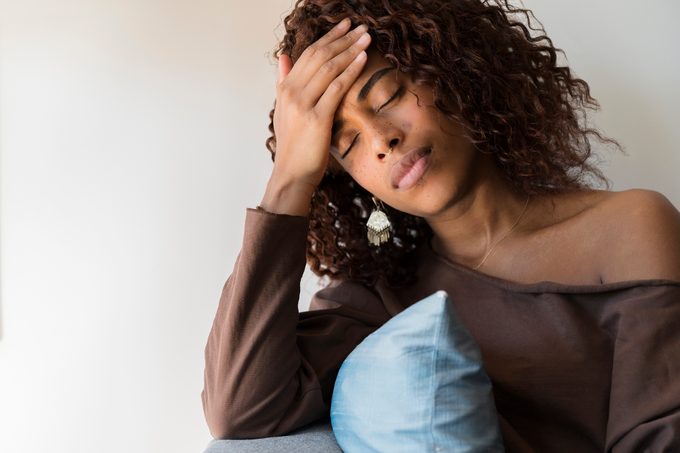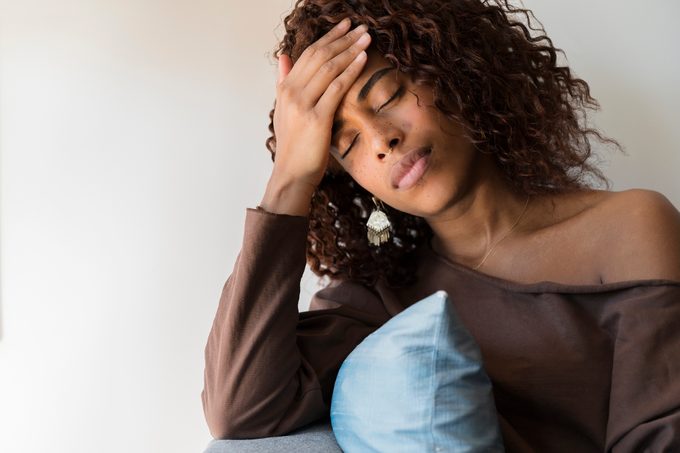What is a migraine?
If you’ve ever had a migraine, you know that it’s more than just a bad headache.
A migraine is actually a neurological disease that can have an array of symptoms, including throbbing pain and sensitivity to light and sound.
At least 39 million people live with migraine headaches, according to the American Migraine Foundation. But that number is likely even higher because many people aren’t diagnosed and don’t get treatment that can help.
Here’s a look at what causes this often debilitating pain, the different types of migraines, migraine symptoms, and how migraines are treated.
Migraine causes
Researchers aren’t entirely sure what causes a migraine, but family history and environment are involved.
If one or both of your parents gets migraines, there’s at least a 50 percent chance you’ll get migraines too, according to the American Migraine Foundation.
Migraines can affect people of all ages, genders, races, and backgrounds, but they are more common in women than men, often because of hormones. There’s also research that suggests women may be more likely to go to a doctor for pain than men, which would inflate their numbers.
Migraines most often appear between the ages of 15 and 55.
Migraine triggers
Sometimes migraines can seem to happen for no reason. But often you learn that certain factors make a migraine more likely to occur.
Migraine triggers are different for everyone. They can include:
- Hormone changes
- Lack of sleep
- Weather changes
- Stress and anxiety
- Alcohol
- Hunger
- Dehydration
- Strong smells
- Schedule changes
- Loud noises
- Bright lights
Certain foods can prompt a migraine as well. Some of the most common migraine food triggers include:
- Chocolate
- Aged cheese
- Bacon, hot dogs, salami, and other meats with nitrates
- Red wine and other alcoholic beverages
- Foods with monosodium glutamate (MSG), including soy sauce, meat tenderizer, and fast food
- Pickled, fermented, or marinated foods, such as pickles and olives
- Caffeine
- Onions
- Aspartame
- Lentils and beans
- Some fruits, including avocados and bananas
- Some nuts and seeds
Different types of migraines
There are several different types of migraines. They are classified depending on the types of symptoms you have and how often you experience them.
The migraines that strike most people are known as classic and—not surprisingly—common.
Classic migraine
Also called complicated migraines, these start with a warning sign called an aura. This can be a visual or sensory feeling, like flashing lights, dots across the vision, or numbness. Auras can last 15 to 30 minutes and typically come before or during head pain. Pain can be on one or both sides of the head.
Common migraine
This migraine comes on without an aura and is the most common type of migraine—hence the name. Pain is usually only on one side of your head. It usually starts more slowly and lasts longer than a classic migraine. It can be harder to diagnose because it has symptoms similar to other types of headaches.
Migraine without head pain
Sometimes called a silent migraine or acephalgic migraine, this migraine has some of the classic symptoms, including nausea, dizziness, and light sensitivity but doesn’t come with pain.
Hemiplegic migraines
With this rare type of migraine, one side of your body feels temporarily weak, as if you are having a stroke. The symptoms typically last for about 24 hours but can stick around for a few days. Pain can come before or after the weakness in your arms, legs, or face.
Retinal migraines
Also called ocular migraines, these prompt changes in vision. But the visual changes are different from those you’d experience during a migraine with an aura. Vision can disappear to the point of blindness in one eye, but it usually only lasts a few minutes.
Chronic migraine
If you have migraines 15 days a month or more, you likely have chronic migraines. Some days, symptoms can feel worse than others, and you may think you’re having different types of headaches. Often people with chronic migraines will take medicine more than 10 to 15 days each month, and that can lead to even more “rebound” headaches. That is, you take meds to treat the pain, but have to use them so many days in a row that the medication itself triggers more headaches.
Vestibular migraine
Dizziness, vertigo, and balance issues go hand in hand with vestibular migraines. These may occur with or without head pain. Most people with the condition have had motion sensitivity (like car sickness) since they were young and have had migraines at some point in their lives.
Abdominal migraine
Seen mainly in children, an abdominal migraine is noted for its nausea, abdominal pain, and vomiting. Most children grow out of it when they’re in their teens, but they often develop other types of migraine headaches.

Migraine symptoms
How you feel when you have a migraine depends on the type of migraine you have.
Possible migraine symptoms can include:
- Intense, throbbing pain or dull, aching pain on one or both sides of your head
- Nausea or vomiting
- Sensitivity to light, noise, or smells
- Pain that gets worse with activity
- Stuffy nose and sinus pressure
- Vision changes, including blurriness and blind spots
- Fatigue and fuzzy thinking
- Neck pain
- Chills and sweating
- Light-headedness
- Dizziness, vertigo, or balance issues
- Tender scalp
How are migraines diagnosed?
To diagnose a migraine, your doctor will ask about your symptoms and your medical history. They’ll do a physical and neurological exam.
They’ll ask if you know what triggers your migraines and if anyone else in your family also has migraines.
It’s helpful if you have kept a headache journal to track when you have migraines, the symptoms, and how long they last. That can help your doctor figure out your triggers and whether the pain is from migraines.
In some situations, your doctor might suggest a blood test, CT scan, or MRI to help rule out any underlying conditions or more serious causes of head pain.
Migraine treatment
There’s no cure for migraines. Treatment is focused on preventing migraine attacks and treating headache symptoms.
Abortive medications
These work best when you take them at the first hint of a migraine. They include triptans, antidepressants, and epilepsy and blood pressure drugs, as well as narcotics and steroids. They decrease pain, nausea, light sensitivity, and other symptoms. But if you take too many of them, they can cause more headaches.
Preventive medications
Also called prophylactic drugs, these are often prescribed when you have several severe attacks per month and your migraines interfere with your daily activities. These medications are taken every day to help reduce the frequency and severity of your migraines.
Migraine home remedies and other treatment
If you have migraines, you’ve likely tried all sorts of migraine home remedies for your pain. Those might include:
- Acupuncture
- Hypnotherapy
- Supplements like magnesium, butterbur, B2, and feverfew
- Melatonin
- CBD
- Biofeedback
- Cognitive behavioral therapy
Lifestyle tips for migraines
There are things you can do every day to help lower your risk of getting a migraine. Know your triggers and try to avoid them. For example:
- Get plenty of sleep
- Manage stress
- Eat and drink regularly
- Avoid trigger foods
- Keep a regular schedule
The post All About Migraines: Triggers, Treatment, Prevention, and More appeared first on The Healthy.







